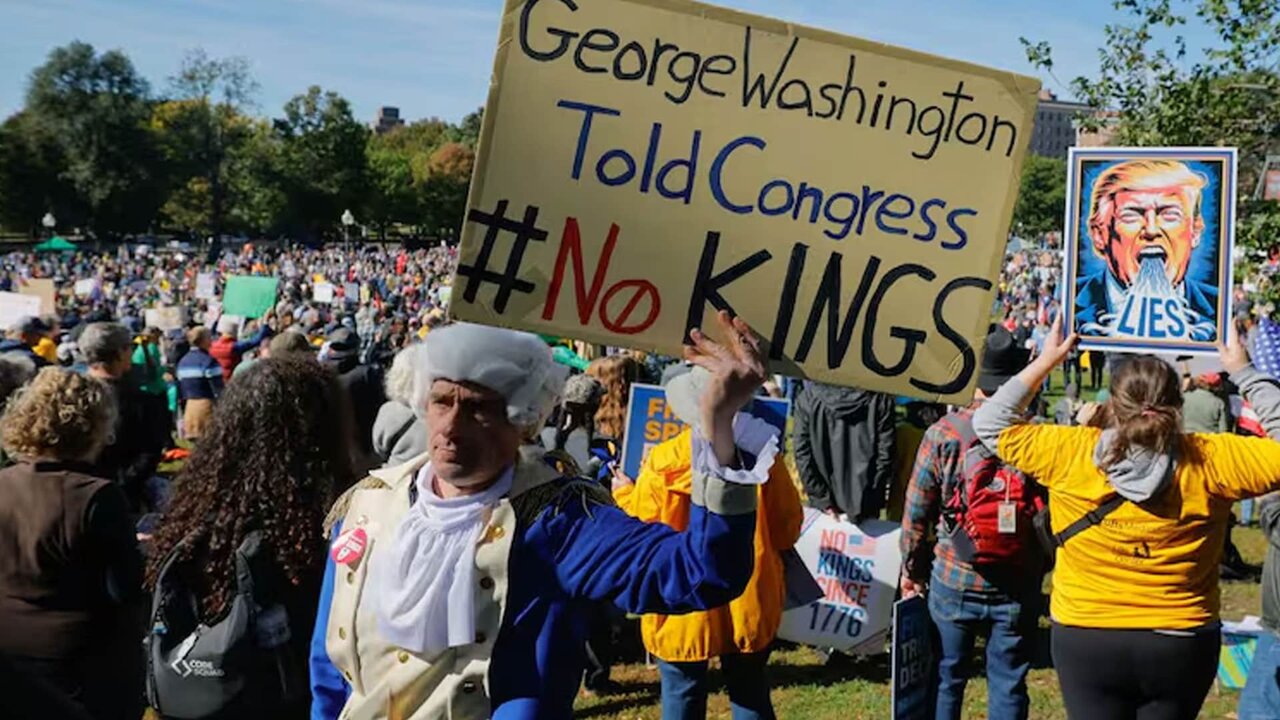‘No Kings’ protests against Trump reveal deep divisions in U.S.

TEHRAN – The “No Kings” protests that took place on Saturday across the United States revealed more than opposition to President Donald Trump’s policies—they exposed the nation’s deep political, social, and ideological divisions.
From major cities to small towns, the demonstrations highlighted growing concern over the concentration of executive power, the role of Congress, and the overall state of American democracy. The protests brought together citizens expressing anxiety about the direction of governance and the balance of authority in the country.
The demonstrations took place in major cities including New York, Boston, Chicago, Los Angeles, and Washington, as well as smaller towns. Protesters carried signs reading “Resist Fascism,” “The Constitution is not optional,” and “Nothing is more patriotic than protesting,” signaling widespread unease over executive overreach, immigration policies, healthcare cuts, and perceived threats to democratic institutions. The term “No Kings” reflects the belief among participants that President Trump and some members of his administration are behaving like monarchs rather than elected officials accountable to the public.
In Washington, Iraq War Marine veteran Shawn Howard told the Associated Press that he had never participated in a protest before but felt compelled to act. “These are un-American,” he said, citing immigration detentions without due process and the deployment of troops to U.S. cities as alarming signs of eroding democracy. “I wanted to show that the government’s disregard for the law is unacceptable.”

Massimo Mascoli, a 68-year-old retired electronic engineer from New Jersey who grew up in Italy, told the BBC he joined the protests because he feared the U.S. might follow the same path his home country did in the last century. “We cannot count on the Supreme Court, we cannot count on the government,” he said. “We cannot count on Congress. We have all the legislative, executive, and judiciary against the American people right now. So we are fighting.” Mascoli cited immigration enforcement and healthcare cuts as key concerns motivating his activism.
Some Democratic leaders voiced support for the protests, framing them as an expression of civic engagement rather than partisan opposition. Senate Minority Leader Chuck Schumer posted on X, “We have no dictators in America. And we won’t allow Trump to keep eroding our democracy,” alongside photos of himself holding a sign addressing healthcare concerns in New York. Vermont Senator Bernie Sanders told a crowd in Washington, “We’re not here because we hate America, we’re here because we love America,” emphasizing the patriotic motivation behind the demonstrations. Senators Cory Booker, Adam Schiff, and Chris Murphy also acknowledged the protests, sharing images and videos of large turnouts in their states and thanking Americans for participating.
Republican officials, meanwhile, dismissed the demonstrations as “Hate America” rallies, labeling participants as “communists” or “Marxists,” highlighting the partisan disagreement over public protest and the ongoing government shutdown.
Internationally, the movement drew attention. Solidarity demonstrations were reported in Berlin, Madrid, and Rome, and several hundred protesters gathered outside the U.S. embassy in London. In Toronto, demonstrators near the U.S. consulate waved signs reading “Hands off Canada,” reflecting global concern over U.S. policies and the perception of rising political instability.
Saturday’s protests marked a significant escalation in civic mobilization. April’s national march against Trump and Elon Musk included 1,300 registered locations, while June’s first “No Kings” day reached 2,100. Organizers say Saturday’s seven million participants reflect both the movement’s growing reach and the intensity of public concern over the trajectory of the nation’s government.
Observers note that the protests are symptomatic of broader anxiety over the expansion of presidential power. Since returning to the White House in January, Trump has increasingly used executive orders to reshape federal agencies, deployed National Guard troops to cities despite objections from state governors, and publicly pressured law enforcement to target perceived political enemies. While supporters argue these measures were necessary to manage a country in crisis, critics warn they challenge constitutional limits and the balance of power central to the U.S. system.
The protests, featuring voices from veterans, immigrants, retirees, and international supporters, underscore the scale of political polarization in the U.S. and the enduring role of citizen activism in shaping public debate. Analysts suggest the events may influence the public conversation on executive power and the responsibilities of elected officials in the months ahead.
Leave a Comment